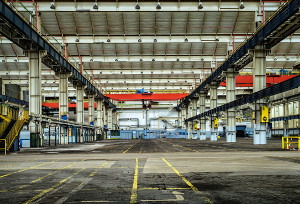The Purpose of Art to Make Familiar Strange and the Strange Familiar Who Said
Making the Strange Familiar and the Familiar Strange
Midweek, Oct 2, 2013
Author: Business organization Consultants, Inc.

Although the expression "Making the strange familiar and the familiar strange," is not one nosotros oft hear, it is relevant to situations affecting human being creativity, where the objective is to motivate people to a dissimilar approach interpreting things or solving problems. Attributed to the German poet Novalis (1772-1801), the expression is typical of the Romantic era, when artists sought mysterious qualities in well-known objects, while also seeking to identify recognizable, commonplace characteristics in the weird and extraordinary. In doing then, Romantics began a trend among the Western creative community that lasted thru the 19th century well into the 20th (the Surrealists).
And there is a lot of truth to the idea that expanding one's point-of-view by comparison things is important for creativity. Because if your teapot has not yet talked to yous (or at to the lowest degree winked), yous may exist very ready to seek unique features in what yous might commonly consider average, unexciting, mundane.
We all realize the regular factors of life, and can readily split "business" from "fairy tales," "reality" from "fantasy."
But is that all in that location is to being? This question may seem to you irrelevant, not worth because, but please try to requite it some thought. Seeking the unusual may offer a new guideline useful, for instance, to conducting concern.
"Why speak of business?" yous might inquire. Doesn't it rely on the strictly practical for success manufacturing and distributing products and services? Where does the connexion betwixt familiar/strange enter into such an appraisal?
But retrieve Henry Ford devised the concept of associates-line, conveyor-chugalug automobile product after observing the division-of-labor used for processing meat in a meat-packing found. Until so, cars were constructed piece-by-piece in large gymnasium-like spaces; each unfinished vehicle was stationed solitary of the floor. Autoworkers moved from ane vehicle to another, dragging behind them a rattling cart filled with auto-parts they needed to adhere to each unfinished automobile. The process was inefficient and costly.

In a burst of creativity, Ford observed meat-packers each cutting a department of meat (thigh, breast, liver) as it was moved to them overhead, and realized a similar same process could be applied to auto-industry. Autoworkers did not need to move-effectually; the car could be brought to them for assembly, via conveyor. He was inspired past events from a completely different industrial-field. Ford rendered the strange familiar, in that his unprecedented procedure apace became commonplace throughout manufacturing.
In contrast, "making the familiar strange" occurs when we seek to find new uses for something -- an object or human being agency similar a pupil organization or local environmental group -- whose office we generally take for granted. While others might not appreciate our response, the fact that an individual provided a different meaning or interpretation to the object in question can alter other's outlook as well. This oftentimes-unproblematic transition tin be the source of extreme inventiveness.
A glass is a drinking glass, but if we retrieve about it every bit an unfamiliar object, what functions could we devise? Normally described as "a tool for drinking most liquids," are there other descriptions we can utilise? If we telephone call it "a lump of glass with a certain volume" it can exist used, for example, equally a paperweight or at the end of a shelf every bit a bookend for paperbacks (especially if filled with colored-sand). And, if filled with colored-sand might it non also exist a "molded sculptural work of art(??)," as well equally a bookend and a glass?
Another example occurs with Korean rice bowls created 300-500 years ago. Everyday items at the time they were made, the bowls were typically fired in batches of almost x. Today, they are extremely valuable, but the people using them in their original class were mostly poor, unlanded peasants. With little in the mode of material possessions, they plant applications for the bowls that far exceeded their original role as dinner service.
Perhaps the bowls were used to hold coins, or water, or flower petals floating in water, among many other potential applications. None of these uses are really outstanding merely they exercise demonstrate "making the familiar strange," and also establish how personal creativity can emerge to solve minor bug when the necessity arises.
This diverseness of functional treatments at get-go made the "familiar strange," considering new ways of employing the bowls took an ordinary object and gave it a unique purpose. Still, in time, the reverse occurred; that is, the "strangeness" of the basin's new uses became "familiar" to all who regularly engaged the formerly unique applications for the object. In both these cases, a familiar object was provided new uses and identity that transcended its designated function, the purpose for which it was originally made. Creativity develops by changing things around!!
Acquire More:

Source: https://bconglobal.com/resources/making-the-strange-familiar-and-the-familiar-strange#:~:text=Attributed%20to%20the%20German%20poet,in%20the%20weird%20and%20extraordinary.
0 Response to "The Purpose of Art to Make Familiar Strange and the Strange Familiar Who Said"
Post a Comment